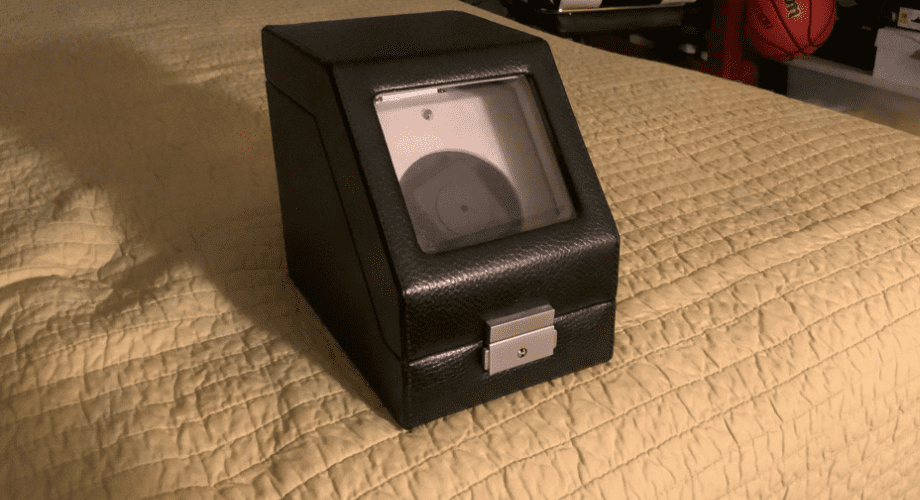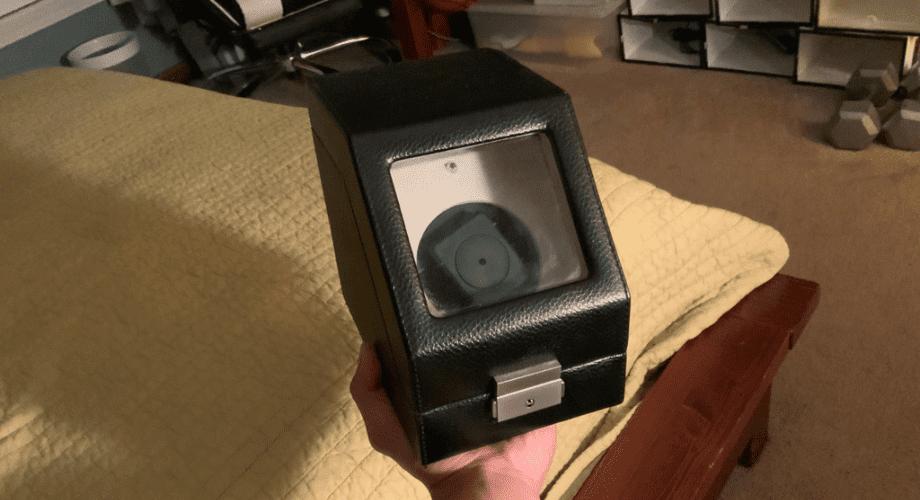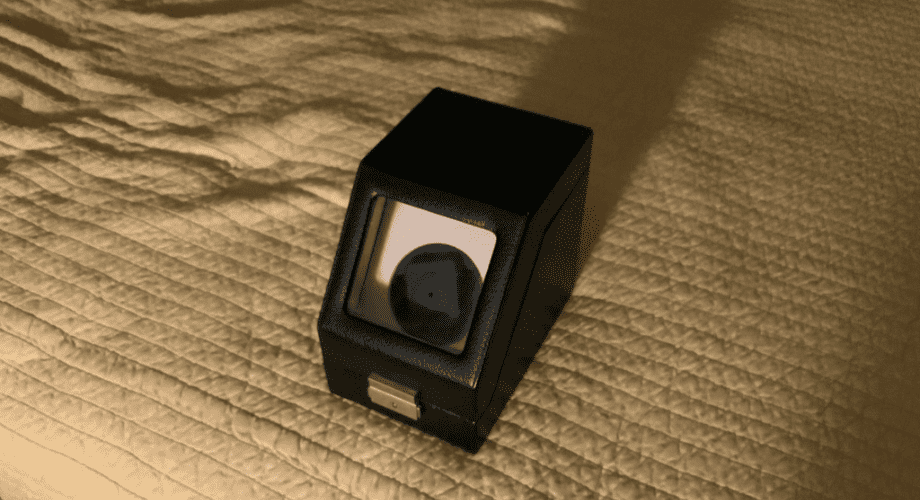
Just recently, my grandma gave me one of her old watch winders that she stopped using for her Rolex and I started using it for my watches. But I was skeptical about using it at first because I didn’t know if it would damage my watches. There has been timely debate as to whether watch winders are suitable for your watch or if they cause damage—the advantages of having this device depend on the quality of the watch winder.
A poor quality watch winder can damage your watch. Magnetism and overwinding are two of the most common problems a watch wearer can face. A good quality watch winder will preserve and maintain the watch’s integrity.
It is a rare occurrence for a watch winder to damage a watch. If you want to know if watch winders damage your watch, this article can help!
What Is a Watch Winder?
If you are familiar with watches or are a collector of watches just like me, you may already know what a watch winder is. However, some people are not in the loop. Watch winders are becoming more popular due to people purchasing and collecting more watches.
The watch winder is a device that makes your watch continue running when you are not wearing it. It is an alternative to having the power reserve depleted. Watches are placed in the watch winder and turn to make the rotor spin and deliver energy to the movement.
With a watch winder, you do not need to set the watch every time you have worn it. Commonly, it takes about 72 hours for the watch to stop working, facilitating the need for a watch winder. The watch winder keeps the watch moving. However, watch winders only help automatic watches come in all shapes and sizes and range of prices.
If you’ve ever wondered why you should invest in watches, I have made the best resource for you. In another blog post, I wrote about 6 different reasons why you should invest in watches. Click here to check it out!
Why Would I Need a Watch Winder?

You may own modern watches that do not require a watch winder. However, you may need a watch winder if you are a collector of older watches and have complicated calendar displays.
Some examples of calendar displays:
● Perpetual calendar
● Complete calendar
● Annual calendar
● Moon phase display
If you own a vintage watch with a date of the non-quick set type, you may need a watch winder. Rapid calendar advance has existed since the 1950s.
However, watchmaking companies did not have this feature until the 1960s or 1970s. Watch winders make it easier for the avid collector to adjust their watch.
Can a Watch Winder Damage My Watch?
A good quality watch winder will likely not damage your watch. However, if you are using a poor-quality watch winder, it may cause problems.
There are two significant reasons why a watch winder can damage your watch. These include:
● Magnetism
● Overwinding
There are certain occurrences when your watch may be damaged. Magnetism and overwinding are rare instances in which the watch winder can damage the watch.
Overwinding Your Watch
Watches have a slip-clutch, which protects the watch from being overwound, engaging, and disengaging as the mainspring becomes fully wound. However, there are times when it happens. If there is constant pressure on the slip clutch, it can wear down, and the structure inside the watch becomes harmed when it is damaged.
The winding movement is crucial for the successful winding of the watch. If you have an automatic watch, it is impossible to overwind it. A power reserve on an automated watch is usually more than 30 hours. Winding the watch should not be necessary. A mechanical watch is also unlikely to be overwound unless a lot of force is utilized, and it takes a lot of doing.
When you have a good quality watch winder, this typically does not happen and does not happen often. Rolex watches, for example, are designed to wind in both directions. However, some other brands are only made to wind clockwise or counterclockwise, which is how a watch winder can come in handy. It also helps to have your watch’s winder set on the correct turns per day.
Magnetization
Magnetization is another factor that can affect your watch. Magnetization occurs when the electric motor and magnet in the watch winder start to generate a small magnetic field.
The magnetic field interferes with the watch’s capability to run correctly. The watch may behave unpredictably, and the movements lose stability and timing.
Most watches come with a special shield to prevent this sort of thing from occurring. The shield that protects the watch is typically a piece of steel, which prevents the magnetic field from affecting the inside of the watch. If you have a good watch winder, you can avoid this problem.
Mechanical and Automatic Watches
Mechanical and automatic watches are both technically mechanical.
The main difference between the two is the rotor winding mechanism feature of the automatic watch. The automatic watch contains a rotor that charges the mainspring every time it is worn as it picks up on the wrist’s movement.
A mainspring powers both mechanical and automatic watches. If you want to power the mainspring, you need to wear the watch. A mechanical watch is wound by turning the crown in the forward direction. Once wound, there should be some tension, but if you force it further, it may damage the watch.
An automatic watch is wound automatically just by wearing it. A rotor is attached to a structure that winds and charges the watch when it rotates. You cannot damage an automatic watch by winding.
Speaking of automatic watches, have you wondered why watches are so popular in the first place? If so, I wrote an article talking about why watches are so popular. You can click right here to check it out.
The Argument for and Against the Watch Winder
It has been said that watch winders are good for your watch because allowing it to wind down and rest can cause the lubricants and oils inside the watch to coagulate, hindering the watch from properly utilizing energy.
The Winder Can Cause Wear and Tear
This will eventually require the assistance of a watchmaker. On the other hand, it has also been said that watch winders will eventually cause wear and tear on a watch’s movement due to excessive utilization of the winding mechanism.
When the Winder Works
A watch winder is good to have because if a watch winder is constantly being at the point of being fully wound, and the bridle is continuously engaging with the mainspring, it has a greater possibility of wearing down over time. This situation is where the watch winder is a helpful tool to have. Keep in mind that there are specific settings that your particular watch must be set on before it is placed on a watch winder.
The Watch Winder Could Take Over
Another factor with the watch winder is that it should never exceed your watch’s power reserves, as a winder is designed to uphold the approximate level of energy in the mainspring from when it was placed on the winder. If you own a winder that rotates constantly and does not have regard for movement specifications, it can damage your watch.
Quality is Important
A quality winder should do what is necessary to maintain the watch’s integrity. A watch winder is also a good idea because it decreases the time spent messing with the watch’s crown. Overall, a watch winder is fine to use as long as you have one that is top quality.
Conclusion

Having a watch winder is an essential part of the collector’s repertoire. A watch winder keeps your watch running efficiently when you are not using it. A watch winder can benefit the watch winder as it is convenient. However, getting a good quality watch winder is best to ensure that you do not wear out your favorite watch.
